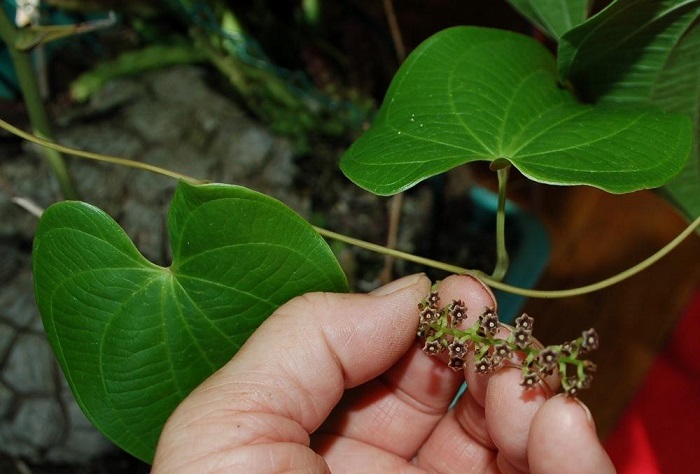Mexican yam is natural birth control. Many medicines are used nowadays, but one of these pills has a special place in history. After its release in 1960, the term “pill” quickly became a synonym for oral contraceptives, namely the birth control pill. The contraceptive pill was introduced prior to the sixties’ freedom, but over time, it provided women with an active sexual life as well as the unique choice of having or not having children.
Birth control pills
The difference between the contraceptive pill and other drugs was that it was taken to prevent a natural process, not to treat a disease or relieve pain. Reproductive hormones control the menstrual cycle through a series of sensitive feedback processes. The daily dose of progesterone hormone from the pill interferes with this process by suppressing ovulation. Initially, the hormone was obtained from plants, especially the two inedible Mexican yam species, cabeza de negro (Dioscorea mexicana) and barbasco (D. composita), in the local language.
Exciting and promising research on steroids, sex, and other hormones was conducted in the 1930s and 1940s. While biologists studied how these chemicals affected body functions, chemists investigated ways to produce a large quantity of hormones at the lowest possible cost. The plants also contained steroids, and it was Russell Marker, the independent organic chemist, who first realized the potential of the Mexican yam. His genius lay in his ability to synthesize the complex organic components found in nature once he got the right material. Marker was impressed by the Japanese work on the yam steroid diosgenin, and he began working to find a cheap source of plant steroids.

Marker’s team analyzed about 400 plants collected during their early 1940s trips to the south of the United States and Mexico with the help of botanic experts and locals. Cabeza de negro yam caught Marker’s attention. With its heart-shaped leaves and huge tubers, this large, coarse, and wild ivy grew spontaneously in the dense Veracruz forests of eastern Mexico. By convincing a local shopkeeper to find yam root for him, Marker managed to produce industrial progesterone from the rich source of this diosgenin. The synthesis of one led to the production of other sex hormones (adrenal hormones), as all human steroids are similar.
Syntex pharmaceutical company established
Russell Marker founded the Syntex pharmaceutical company in Mexico City in 1944 and left it in early 1945. He had discovered that the barbasco yam was yielding a higher amount of diosgenin; moreover, the barbasco was maturing only in three years, whereas it was six to nine years for cabeza de negro. Syntex chemists Carl Djerassi and Luis Miramontes had managed to produce larger amounts of pure progesterone by improving the processing method of the root. They then developed a form of progesterone named “norethisterone” that could be taken orally instead of being injected. The hormone intended for use in the treatment of menstrual disorders and miscarriage turned out to be a powerful oral contraceptive. In Puerto Rico, clinical tests were done, and the first birth control pill, Enovid, came out.
Due to its high diosgenin stock, Mexico became the world leader in the production of high-quality herbal hormones, thanks to Syntex and their contraceptive pills. Although nothing was perfect, unemployed peasants hid the yams they had dug out of the forest in bad conditions before selling them to intermediaries. This type of harvest was not sustainable. With the Mexican government taking yam harvesting under state control, wild yam prices rose in the 1970s, and other options such as holistic synthesis became financially viable.
References
- Accatino L, Pizarro M, Solis N, Koenig CS. Effects of diosgenin, a plant-derived steroid, on bile secretion and hepatocellular cholestasis induced by estrogens in the rat. Hepatology 1998;28:129-40.
- Aradhana AR, Rao AS, Kale RK. Diosgenin-a growth stimulator of mammary gland of ovariectomized mouse. Indian J Exp Biol 1992;30:367-70.
- Aumsuwan P, Khan SI, Khan IA, et al. Evaluation of wild yam (Dioscorea villosa) root extract as a potential epigenetic agent in breast cancer cells. In Vitro Cell Dev Biol Anim 2015;51(1):59-71.
- Cheong JL, Bucknall R. Retinal vein thrombosis associated with a herbal phytoestrogen preparation in a susceptible patient. Postgrad Med J 2005;81:266-7.
- Eagon PK, Elm MS, Hunter DS, et al. Medicinal herbs: modulation of estrogen action. Era of Hope Mtg, Dept Defense; Breast Cancer Res Prog, Atlanta, GA 2000;Jun 8-11.


